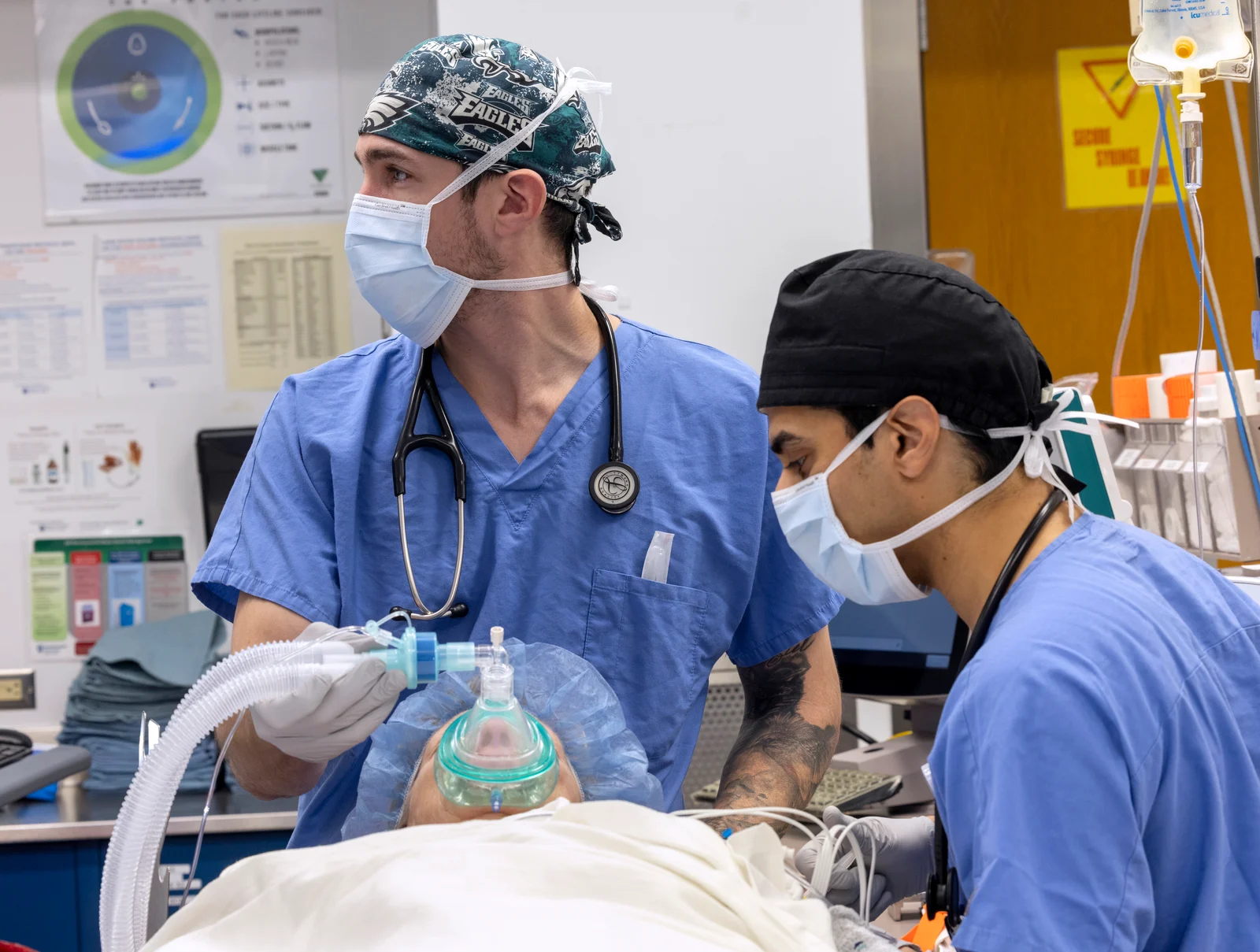
Museum
Department of Anesthesiology and Perioperative Medicine
In This Section
Anesthesiology and Perioperative Medicine
The Dr. Berend Mets Museum of Anaesthesia History
On Oct. 23, 2020, in the middle of a pandemic, the Department of Anesthesiology and Perioperative Medicine at Penn State College of Medicine celebrated its 50th anniversary with the inauguration of the Dr. Berend Mets Museum of Anaesthesia History.
The museum is located in the Julien F. Biebuyck library, and expanding in other locations in the department.
The museum displays historical artifacts reflecting the advances in knowledge base, anesthesia apparatus, drugs and monitoring equipment that have steadily enhanced the safety of anesthesia equipment.
The centerpiece of the museum is a Dräger pulmotor, which was donated through the offices of Mr. Peyn, the curator of the Dräger Museum, Lubeck, Germany.
The Dräger pulmotor was the first automated ventilator, designed to resuscitate the victims of mining disasters and drownings. The pulmotor in this museum was donated by Stefaan Dräger, a descendant of its inventor, who is now the CEO of Drägerwerk AG & Co., the largest mechanical ventilator company in the world today. This model is likely of 1912 vintage. There is a round yellow decal mounted on the inside of the wooden lid that attests to the fact that this machine has been used to resuscitate 276 scheintote (apparent corpses) between Jan. 16, 1912, and Nov. 5, 1913. That’s a success rate of close to 140 patients per year. Pulmotors were used in Europe and the United States well into the 1940s and saved many lives.
The Wood Library-Museum, in Schaumberg, Ill., has allowed the museum to exhibit many of the artifacts now beautifully displayed in securely locked glass cabinets along the walls of the Julien F. Biebuyck library.
Many individual donors have also provided artifacts to the museum. Frieda and Harry Latshaw donated many of the anesthesia machines displayed, and Drs. Elizabeth Frost, Larry Jones, Richard Bitner and Charles Kingsley were other major contributors who have enriched the exhibits immeasurably.
The Dr. Berend Mets Museum of Anaesthesia History is committed to preserving its collection and expanding the museum to educate future trainees in the art and science of anesthesia. The museum is interested in any items related to anesthesia history. All donations of artifacts are individually recognized in the displays, and donations of more than five large artifacts are recognized as named contributors on a plaque on a side wall of the museum.
To make an artifact donation, email DrBerendMetsMuseumofAnaesthesia@pennstatehealth.psu.edu. The museum will reimburse all shipping costs related to the donation.
Drager pulmotor machine on display at the museum.
The Ohio Kinet-O-Meter 4000 was commonly referred to as the Heidbrink, after its original manufacturer. It was a popular mid-20th century machine due to its compact design and versatile components. This model was donated by Mr. Harry Latshaw.
The Dr. Berend Mets Museum of Anaesthesia History's largest display, featuring a replica Morton inhaler and the metaphorically minded skull, includes vaporizers, inhalers and early vital sign monitors. Highlights include Schimmelbusch and Yankauer masks and an Ohio Model 60 Infant Circle Absorber from the 1950s, one of the first breathing systems designed for pediatric patients.